All About Persian Saffron | The Best in the Whole World
Saffron-producing plant is known by its scientific name, Crocus Sativus.
The plant only blooms yearly and requires meticulous manual harvesting because of its fragility. Saffron is known as the red-gold because it takes much labour to create just one ounce of pure saffron from each blossom, which can only yield three threads before being dried.
There is a reason why Iranian saffron is regarded as the best saffron on the market and why more than 90% of the world's saffron is produced there. When buying Iranian saffron, you should exercise caution to avoid buying fake saffron and to check the source. Saffron is available in many places, including Afghanistan, Kashmir, Spain, Greece, and Iran, but its quality is unquestionably different.
Persian Saffron and Important Facts
In this article, we have provided you with valuable information about Iranian saffron to learn more about it, its features and benefits, and to distinguish original saffron from fake.
Why is Iranian Saffron the Best?

The perennial Crocus Sativus, popularly known as the Saffron Crocus, has a stalk covered with six purple blooms and three scarlet stigmas. The spice gets its name from the saffron flower's crimson stigmas. Due to the intricate collecting process, it is also the most costly spice in the world. The best saffron that can be found elsewhere in the world is frequently said to come from Iran. Iran saffron sometimes referred to as "red gold," is a beautiful element in Persian cuisine, used in everything from savoury dishes and vibrant sweets to medical and spiritual remedies. The expensive spice has always been in great demand and even provoked a conflict in central Europe in 1374.
What Are the Uses of Iran Saffron?

Because it provides Persian food and desserts with lovely colours and pleasant scents, saffron is a particular condiment and a preferred spice in Persian cooking. Iranians utilize saffron in their tea, kebabs, stews, and sweets. Saffron is also often used in shole zard, a Persian rice pudding that is offered during ceremonial gatherings. Iranians use it to colour handmade Persian rugs.
Persian Saffron Benefits
Iran is where saffron is most likely to have its roots, as it was highly regarded for its therapeutic qualities in Iran. Saffron was consumed to increase libido, lift mood, and sharpen memory. The following are outstanding health benefits of Iran saffron:
1. Iran Saffron is a Potent Anti-Oxidant
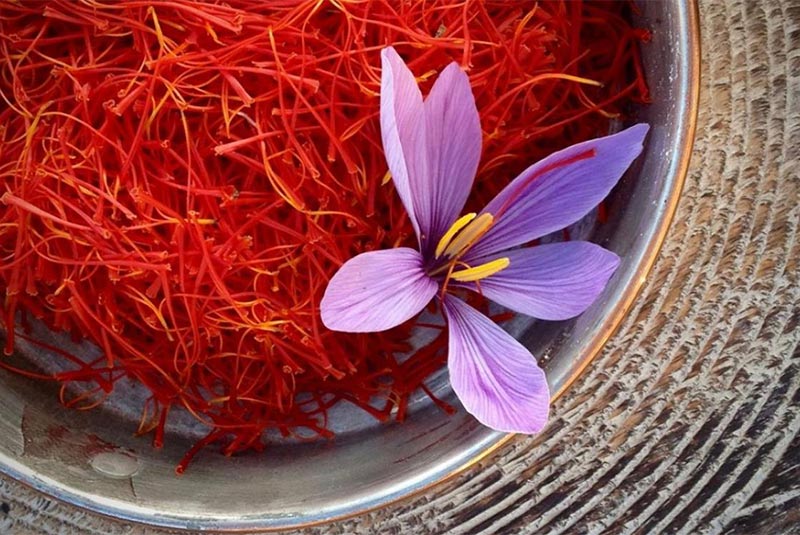
A remarkable diversity of plant components may be found in saffron. These are anti-oxidants, chemicals that defend your cells from oxidative stress and free radical damage. Some notable anti-oxidants in saffron are crocin, crocetin, safranal, and kaempferol. The carotenoid pigments crocin and crocetin are in charge of giving saffron its red hue. Both substances may act as antidepressants, guard against progressive brain damage, decrease inflammation, curb hunger, and promote weight reduction. The flavour and perfume of saffron are exceptional, thanks to safranal. According to research, it may enhance your mood, memory, and learning capacity and shield your brain cells from oxidative damage. Moreover, last, the petals of the saffron flower contain kaempferol. The health advantages of this substance include lowered inflammation, anticancer capabilities, and antidepressant action.
2. Iran Saffron May Alleviate Depression Symptoms
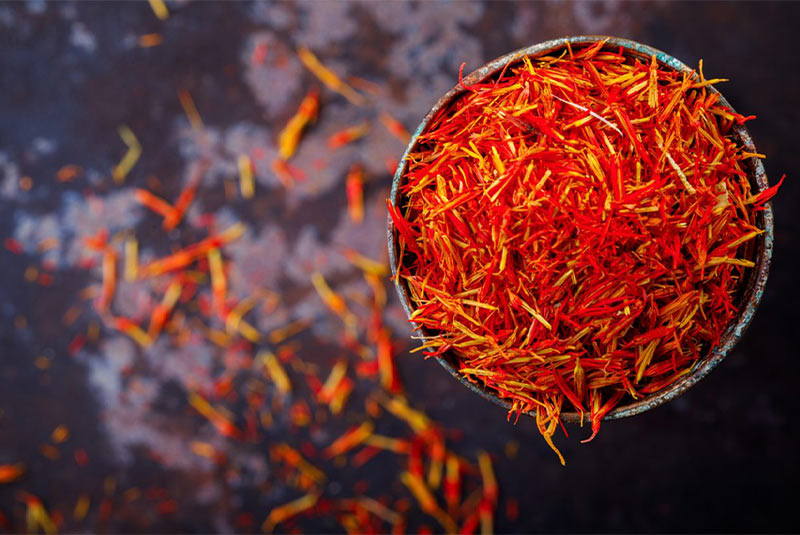
According to a study of five research, saffron pills considerably outperformed placebos in treating the signs and symptoms of mild-to-moderate depression. Other research revealed that saffron, 30 mg taken daily, was precisely as helpful in treating depression as Fluoxetine, Citalopram, and Imipramine. Saffron's side effects were also less common than those from other medicines. The petals of the saffron plant and its stigma, which looks like a thread, appear to be effective for treating mild to moderate depression. While these results are encouraging, more extensive human research with a larger sample size is required before specialists can suggest saffron as a cure for depression.
3. Iran Saffron May Help the Body to Fight Cancer

Anti-oxidants, which aid in scavenging damaging free radicals, are abundant in saffron. Chronic illnesses, including cancer, have been related to free radical damage. Saffron and its components have been demonstrated in test-tube research to specifically kill or restrict the development of colon cancer cells while sparing healthy cells. This impact also holds for cancer cells in the bone marrow, breast, cervix, prostate, lung, and numerous other organs. Additionally, research in test tubes suggests that crocin, the saffron's primary anti-oxidant, may increase cancer cells' sensitivity to chemotherapy medicines. Although the results of these trials in test tubes are encouraging, additional study is required to understand saffron's anticancer properties in humans fully.
4. Iran Saffron May Reduce PMS Symptoms
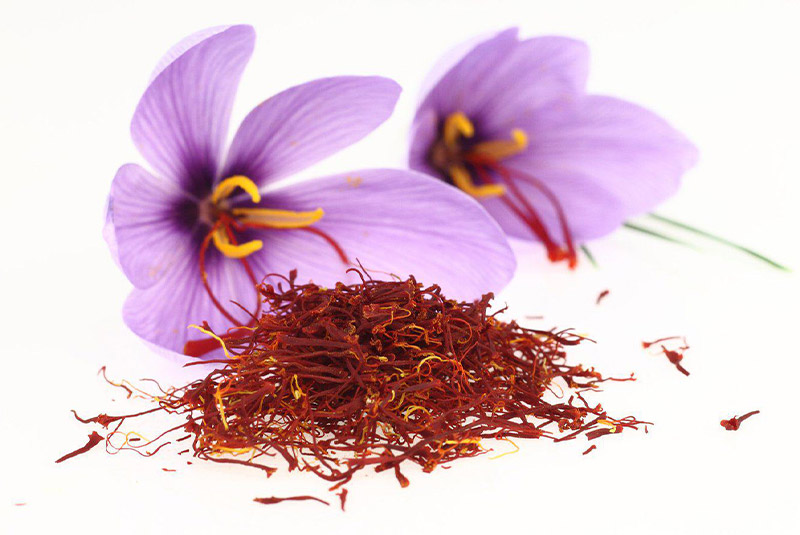
According to studies, saffron may be used to relieve PMS symptoms. A daily dose of 30 mg of saffron was more beneficial than a placebo in treating PMS symptoms in women aged 20 to 45, including irritability, headaches, craving for food, and discomfort. Another study discovered that 20 minutes of saffron inhalation alone significantly reduced PMS symptoms, including anxiety and the stress hormone cortisol.
5. Iran Saffron May Help With Weight Loss

Snacking frequently is a behaviour that might make you put on weight. Research suggests that saffron may help you avoid eating by reducing your appetite.Women who took saffron pills lost much more weight than those who took a placebo in an 8-week trial, feeling significantly fuller and snacking less. Taking a saffron extract supplement dramatically reduced appetite, body mass index, waist circumference, and total fat mass in 8-week research. However, scientists are unaware of how saffron reduces hunger and promotes weight reduction. According to one idea, saffron improves your mood, making you less likely to want to eat.
Other Potential Health Benefits of Iran Saffron

Saffron has been attributed to several unproven health advantages, including: May lessen the risk factors for heart disease. Studies on animals and in the lab suggest that saffron's anti-oxidant capabilities may decrease blood cholesterol and prevent artery and blood vessel blockage. It may reduce sugar levels in the blood. As demonstrated in test-tube tests in diabetic mice, saffron may increase insulin sensitivity while lowering blood sugar levels. It may help persons with age-related macular degeneration see better (AMD). Adults with AMD seem to benefit from saffron's ability to guard against free radical damage and enhance their eyesight. Adults with Alzheimer's disease may experience memory improvement. The anti-oxidant qualities of saffron may help persons with Alzheimer's disease think more clearly.
Risks and Dosage of Iranian Saffron Intake
Saffron often has little to no adverse side effects. Saffron does not affect people negatively when used at normal cooking levels. People can safely consume up to 1.5 grams of saffron daily as a dietary supplement. However, it has been demonstrated that just 30 mg of saffron daily is sufficient to receive its health advantages. On the other hand, high dosages of 5 grams or more can have hazardous consequences. Pregnant women should avoid high dosages as they may result in miscarriage. Before using saffron supplements, like with any other dietary supplement, consult a medical expert.
Iran Saffron Harvest Season
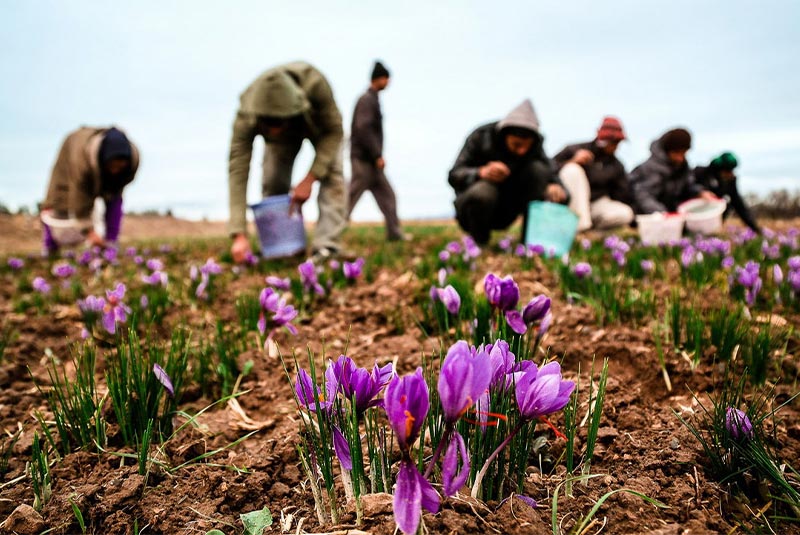
Saffron cannot be grown in warm, sunny locations. Only places with large changes in temperature between day and night will support its growth. Therefore, the provinces of Razavi Khorasan and South Khorasan in Iran have the perfect environment for growing this crop. The saffron harvest season in Iran lasts only a few weeks. Around November 1st, it starts and lasts for approximately three weeks. The harvest season officially begins when the purple blossoms that cover the saffron blooms start to appear on the fields in eastern Iran's Fars Province. Since the saffron bloom has not yet blossomed, the farmers arrive at the farms before daylight. Shortly before daylight, they start rapidly and carefully hand-picking the blooms. The stigmas are removed from each bloom and placed in an excellent location beneath a roof. Many people visit Iran's saffron farms in November due to the captivating process of collecting Persian saffron and separating stigmas. You may participate in the harvesting process and help the farmers.
Types of Iranian Saffron
Best saffron comes in four standard varieties, which are available both inside and outside of Iran:
- Super Negin Saffron: The finest grade of Iranian saffron is called Super Negin. Super Negin is bigger than Negin saffron and is made entirely of crimson saffron strands.
- Negin Saffron: Negin is yet another variety of Iranian saffron, ranked as the second-best saffron you can get in terms of quality. The reddest and most delicate portion of the saffron flower, grade one saffron, is used to make negin saffron.
- Sargol Saffron: The word "sargol" in English refers to the flower's apex. Similar to Negin and Super Negin saffron kinds, Sargol saffron likewise consists entirely of red saffron flower threads; however, the threads are shorter.
- Pushal Saffron: Another variety of Iranian saffron is called pushal, and it contains mainly red and a small number of yellow saffron threads. Yellow saffron is perfectly OK; it has just changed colour due to drying.
Persian Saffron Price

Saffron is one of the most costly spices in the world, as we indicated at the beginning of the post. For every 150,000–200,000 saffron blooms, 1 kilogram of dried saffron will be produced due to the challenging nature of the saffron harvesting procedure. In 2022, the approximate Iran saffron 1kg price range is between US$ 315.32 and US$ 1254.03.On the other hand, saffron is priced substantially lower in Iran due to the market's enormous supply. Also, Iran's Saffron price is lower than saffron from other countries because of its enormous crops and inexpensive labour force.
Which Country's Saffron is Best? Iran, Spain or India?
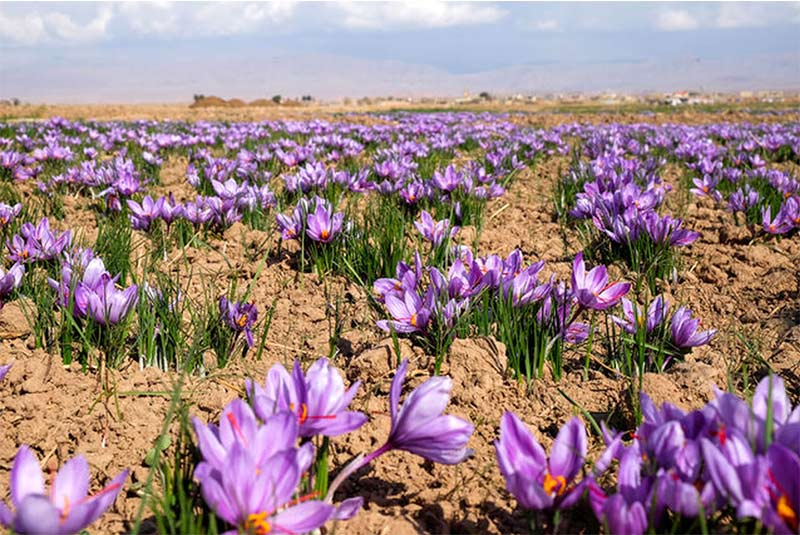
At the beginning of the article, we briefly explained why Iranian saffron is the best saffron in the world. Each year, Iran sells more than 300 tons, or nearly 95%, of its total saffron production. Iran is the most significant producer and exporter in the world. Iran exports saffron to 40 countries, including Spain, China, India, Hong Kong, Italy, and the United Arab Emirates. It is noteworthy to notice that several nations package Iranian saffron under their own brand names for export. The two main competitors of Iranian saffron are Spanish saffron and Kashmiri saffron. In the following, we present a comparison of Iranian saffron vs Kashmiri saffron and Iranian saffron vs Spanish saffron.
Iran Saffron vs Kashmiri Saffron

Saffron from Kashmir and Iran are both highly prized, high-quality products that are difficult to distinguish from one another. Saffron from Kashmir often has a stigma head that is a little bit wider. Both provide a lot of colour and scent. Thus, everyone can perceive the similarities. Iranian farmers have continuously been producing saffron in large quantities for hundreds of years, which means they have the expertise that no other nation can offer in the growth of saffron. They also know how to deal with times of drought and severe rains. Iran produces between 80 and 95 per cent of the saffron that is farmed worldwide, depending on whose statistics you look at. Several saffron-related problems were reported from Kashmir, including adulteration of their harvests, prolonged periods of severe weather that affected crop quality, and even the smuggling of Iranian saffron into India to replace the Kashmiri crop. These problems might all result in variations in the crops' quality. Saffron from Iran is of the same grade but costs less at the source. India rightfully taxes Iranian saffron heavily to safeguard its own Kashmiri market.
Iran Saffron vs Spanish Saffron
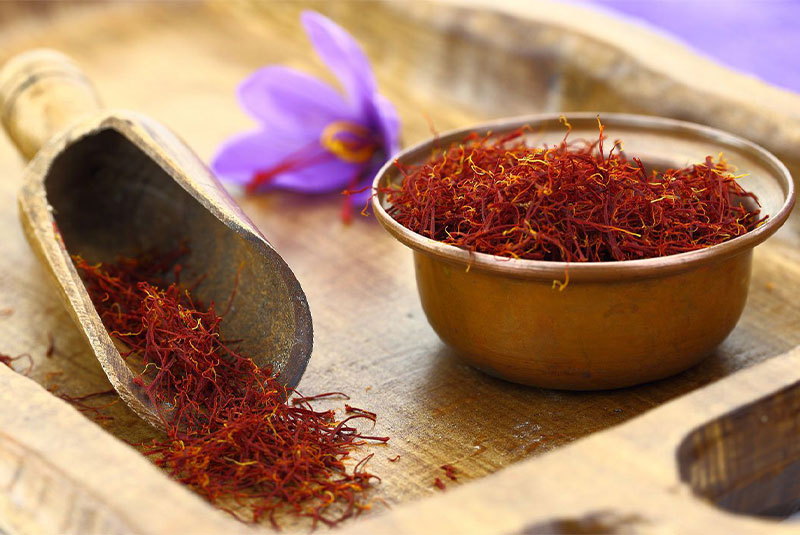
The presence of solid crocin, a natural colouring pigment contained in saffron, is typically indicated by entirely red or dark red saffron. Spanish saffron is significantly lighter and brighter in comparison. This is because producing saffron in Spain requires much human labour. Persian saffron has a greater capacity for colouring as a result. Spanish saffron features curlier, shorter stigmas than Persian saffron, which often has long, thick, and flat stigmas.Spain produces roughly 1 tonne of saffron annually, but it also exports about 100 tonnes. Most of the saffron imported by local traders is repackaged and sold under the label "Spanish saffron." Even occasionally, cheap Spanish saffron is mixed with imported Iranian saffron from other countries and exported. Consequently, purchasing Iranian saffron ensures that you are purchasing premium, pure saffron from the country where the great bulk of saffron is farmed. The pricing is still fair when comparing Iranian saffron to Spanish, Kashmiri, and Italian saffron. We are not claiming that saffron from Kashmir is not delicate; instead, we are pointing out that Iranian saffron has the same quality without the drawbacks of Kashmir saffron.
Does Saffron Expire?
Saffron has a shelf life even though it never expires. Like other spices, it loses its potent flavour and scent with time if it is not stored correctly. For optimal taste, keep saffron in an airtight container in a cold, dark location for up to six months. Like other herbs and spices, saffron is sensitive to light; therefore, you should cover the packet in foil to shield it further. Saffron will not go wrong, but as it ages, its flavour starts to fade more and more.
Can You Buy Iranian Saffron in the USA?

Saffron is grown in the United States, but the bulk comes from places like Kashmir, Afghanistan, and Iran, where saffron is a staple in cuisine and cheap labour. Iran is the world's most significant producer, but the nation has been subject to economic sanctions for many years.Current American laws do not allow the direct purchase of saffron from Iran Saffron company. However, you can buy Iran saffron brands through intermediaries, Iranian restaurants and shops in America or purchase Iran saffron online (You can find the best Iranian saffron brand on online markets such as Amazon).
How to identify fake saffron from an original one
- You must first be able to distinguish the saffron's look. The saffron stigmas have a trumpet-shaped end and become narrower as they move down the plant. They are also a striking crimson hue.
- One of the most excellent methods to tell real saffron from fake saffron is to recognize the flavour. Saffron that is authentic and of the highest calibre must smell sweet but not taste sweet. Profiteers will occasionally add honey or sugar to saffron to enhance its bulk. Saffron may be placed on the tongue to experience its sweet flavour. The original saffron sometimes lacks the mild bitterness that it usually has.
- You can tell it apart from fake saffron by smelling it. This is why it is essential to understand what real saffron smells like. It has a scent that is a cross between honey and hay.
- Another method to recognize genuine Iran saffron is by its colour. The saffron's hue may be seen by running it under warm water. The primary colour of the stigmas will not significantly change if the original saffron is utilized. When you take them from the water, you will see that the fake saffron has lost its primary hue.
- Placing a small amount of saffron in front of the stove flame is another approach to verify the product's validity. The saffron is pure; if the colour shifts to orange or purple, the fake one will become yellow.
Bottom Line
Iran is the homeland of saffron and annually provides more than 90% of the spice's global supply. Iran saffron is different from saffron made in other nations because it is darker in colour and has a distinct tingling scent.Saffron has traditionally played a significant part in Persian food and culture, and there is no doubt about the superiority of genuine Iranian saffron. Iranians are most familiar with the saffron grown in Khorasan Razavi because of its superior quality.In this article, you may find important information on Iranian saffron benefits, its price, how it is harvested, how to distinguish real from fake saffron and so on. We hope this article was insightful. Let us know in the comments how you describe the Iranian saffron.


Comment
Leave a Comment